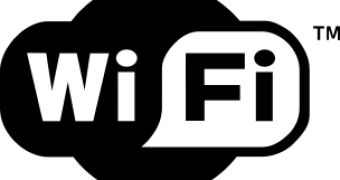Wi-Fi is ubiquitous these days, having made home networking a viable choice for most people and free Internet on-the-go possible. The technology is about to get a huge update in speed, one that’s likely to come with a role change for Wi-Fi connections as well. The WiGig standard has been finalized and the two organizations behind it, the Wi-Fi Alliance and WiGig Alliance, are publishing it today. WiGig operates at 60 GHz and enables connections of up to 7 Gbps.
The speed sure does sound exciting, but it comes with a rather large caveat, WiGig works over very small distances. WiGig operates at a very high frequency, way above the current 5 GHz and 2.4 GHz slices of the spectrum Wi-Fi uses. This comes with several advantages, but also some big disadvantages.
On the plus side, transmitting at 60 GHz means that a lot of data can be pushed through. A bandwidth of 7 Gbps can satisfy just about anything, BluRay movies could easily be streamed at this speed. It’s also a practical choice, the frequency spectrum up to 5 GHz is very crowded and securing a slice of it is practically impossible. The air is much ‘clearer‘ at 60 GHz, though WiGig won’t be the only technology using it. Devices employing WirelessHD, which also operates at 60 GHz, are already on the market.
However, at this frequency, things don’t move very far. With line-of-sight, communications work at a few meters, maybe enough to get you across a room. In reality, the working distance will be much smaller, and you can forget about getting through walls.
WiGig won’t replace your Internet Wi-Fi router anytime soon, but it may replace all the cables that litter the back of computers, TVs, set-top boxes, and so on. The huge bandwidth it provides coupled with the already established Wi-Fi branding should help a lot with its adoption rate. But don’t get your hopes up just yet, while the standard may be approved, it is still going to take a couple of years until devices using the technology hit the store shelves.

 14 DAY TRIAL //
14 DAY TRIAL //